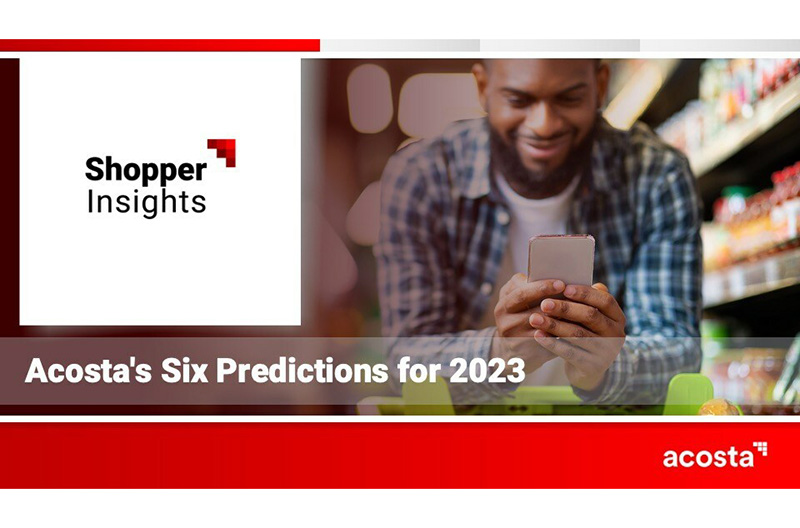Jacksonville, Florida-based Acosta has announced its 2023 predictions, identifying several opportunities and challenges for brands and retailers to reach their consumer as they navigate a dynamic and uncertain marketplace.
“The economic challenges of the past year will continue to impact consumer behavior in 2023, providing overarching context for what shoppers most care about and how they want to shop,” said Kathy Risch, SVP of consumer insights and trends.
“We foresee continued impact from economic challenges as consumers are heightening their expectations for personalized, hybrid and omnichannel shopping, and their redefined focus on wellness for themselves, others and the planet.”
Recession or not, perception is reality
The ongoing state of inflation, combined with other economic challenges, has resulted in nearly half of all shoppers believing that we are in a recession. To cope, consumers are sometimes seeking affordable indulgences, like snacks and beauty products.
“When shoppers believe we are in a recession, they will behave as though we’re in a recession,” Risch said. “They are doing less, trading down, practicing smart, conservative and creative behaviors that are likely to last.”
Retailers and experiences
Shoppers have three key expectations in 2023 for their in-store shopping experiences: enjoyment, convenience and value. Retailers will want to bring in-store experiences online and digital experiences into the store. Tech-enabled in-store design will encourage discovery, browsing and purchasing from QR codes throughout the store to smart screens that share product reviews.
Personalization is evolving
First-party retail data is becoming more targeted to consumers. By 2024, U.S. retail media ad spending will exceed $60 billion – Instacart, Walmart and Amazon are in the lead, with others quickly following. Ninety percent of grocery sales still happen in stores. In-store AI technology like electronic shelf labels provide limitless ad inventory and inform shoppers of proximity value offerings.
Committing to collective wellness
In 2023, wellness assumes a holistic, comprehensive position for consumers – extending from personal wellness (health and happiness) to the family’s health and wellbeing, and to the earth and animals. On a global level, shoppers are concerned about sustainability and the concern will escalate in the U.S. Sixty-nine percent of consumers rate sustainability as important, regardless of age or gender.
Transforming into a hybrid world
While the hybrid evolution was underway in some channels, COVID-19 moved the needle further, resulting in a new hybrid world. Nearly half of all consumers buy many types of products in-store and online, such as: apparel at 57 percent, beauty care at 48 percent, electronics at 44 percent and home and kitchen at 50 percent.
Dining out
Ongoing challenges from inflation, supply chain, labor and customer patterns of “staying home,” are balanced by innovation and a pent-up demand for dining in. Supply chain shortages continue to impact menus and 46 percent of foodservice providers believe it will be at least a year before these challenges are resolved. Insights show that on-premise dining continues to increase but may not recover to pre-pandemic levels for some time.
Risch concludes that brands and retailers will need to continue to make significant shifts in how they provide value, quality, entertainment, service and convenience to their consumer in 2023.
For additional information, visit acosta.com/news/acosta-s-six-predictions-for-2023.
To read more southeast news from The Shelby Report, click here.

